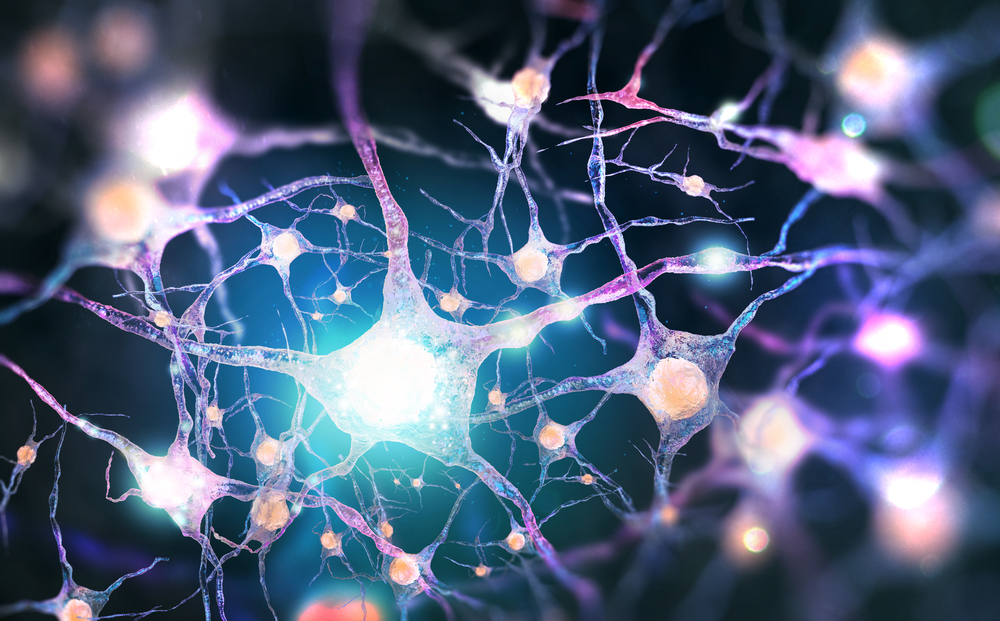ALS Mutation Kills Nerve Cells by Preventing Protein Clumps from Breaking Apart, Study Reports

Andrii Vodolazhskyi/Shutterstock
Researchers have discovered a new way by which a gene mutation can kill neurons in people with ALS and a related disease, frontotemporal dementia, or FTD.
Their discovery, published in the journal Neuron, could offer researchers a new approach to treating these incurable conditions.
The gene mutation leads to the production of a faulty version of the TIA1 protein. The normal version facilitates what researchers call phase separation — a process that allows cell components to assemble into membrane-less structures crucial to normal cell function.
When the protein malfunctions, the structures fail to disassemble, causing proteins to accumulate in nerve cells. This ultimately kills the neurons, researchers from St. Jude Children’s Research Hospital and Mayo Clinic said. They published their findings in an article titled “TIA1 Mutations in Amyotrophic Lateral Sclerosis and Frontotemporal Dementia Promote Phase Separation and Alter Stress Granule Dynamics.”
Their study provides a link to earlier observations that another protein, TDP-43, is often found in protein aggregates in ALS patients. The researchers discovered that when TDP-43 was trapped in such protein assemblies, it became more insoluble.
“This paper provides the first ‘smoking gun,’ showing that the disease-causing mutation changes the phase transition behavior of proteins,” Dr. J. Paul Taylor, chair of St. Jude’s Cell and Molecular Biology Department, said in a press release.
“And the change in the phase transition behavior changes the biology of the cell,” added Taylor, who led the study along with Dr. Rosa Rademakers of the Mayo Clinic operation in Jacksonville, Florida.
The path to discovering the importance of phase separation in amyotrophic lateral sclerosis started with a family that had ALS and FTD. The family had a mutated TIA1 protein. But when researchers discovered it some time back, they did not know what the implications of the mutation could be.
The studies, which included an analyses of the mutated protein’s properties, led to the discovery that TIA1 mutations are common in people with ALS. When analyzing brains of deceased ALS patients who carried abnormal TIA1 genes, researchers found aggregates of what scientists call stress granules.
These TIA1-containing structures form when a cell is exposed to stressful conditions such as heat, chemical exposure, and aging.
The team’s experiments revealed that TIA1 mutations made the protein stickier. This prevented the stress granules from breaking up and trapped TDP-43 in the process.
“These findings are part of an emerging theme that there is a whole spectrum of diseases that includes ALS, and some forms of dementia and myopathy, that are caused by disturbance in the behavior of these structures that perturbs cellular organization,” said Taylor, who said the results offer the first approach to treating ALS effectively.
Current therapies, which can slow the disease’s progression only slightly, work by trying to improve the function of damaged neurons. In contrast, restoring phase separation may actually prevent nerve cell damage.
“We know that these material properties are under tight regulation, so perhaps we don’t have to target the disease-causing mutation itself,” Taylor said. “Perhaps we can restore balance by targeting any of a large number of regulatory molecules in the cell. There are already therapeutic approaches in laboratory testing that seek to do just that.”
The team is now working on achieving a better understanding of phase transition properties. Their ultimate goal is to find ways to restore the processes, which may also be involved in other neurodegenerative conditions, including Alzheimer’s disease.






